Nothing in Australia is as Americanised as our perception of the 1930s and the Great Depression. The American reality of the 1930s was one of hopeless misery with seemingly no end. Many Australians today assume our 1930s was a parallel experience. It wasn’t.
Australia’s slide into the Great Depression began two years before the world, but after a tough few years, we emerged rapidly and robustly. We beat the Great Depression through sound economic policy. America attempted to overcome the nightmare via a big activist state and failed with the Great Depression only ending due to the mobilisation required to win the biggest war in history.
From 1932 until the end of that decade, Australian GDP growth was typically 5 per cent with only one year in that period recording negative growth. In 1932 the unemployment rate in America was 24.9 per cent while Australia was the worst in the Western world at 32 per cent. Four years later, Australia’s unemployment was 9 per cent but America’s unemployment at the same time was 20.1 per cent and remained stubbornly high. The Australian share market surpassed its 1929 peak as early as 1935 – America would wait until the 1950s.
Australia and America in the 1930s were policy polar opposites. It’s a powerful lesson in virtue of free market economics.
Australian historians have largely ignored the 1930s because the hero of the hour was Prime Minister Joe Lyons. Lyons is discarded from popular memory because he was a ‘Labor rat’ and so the Left refuse to acknowledge his stupendous success. On the other side, Lyons had an acute falling out with Menzies in the end and most Liberals think political history begins in 1944. Lyons falls between the cracks to our detriment.
Lyons’ American contemporary was President Franklin Roosevelt. American left-leaning academics rank Roosevelt as either the greatest or second great President of all time. As a result there are endless books, documentaries, and cultural references to him. Winning the second world war obviously bolsters a reputation, but it has obscured Roosevelt’s ruinous economic policies of the 1930s.
Australia and America also diverged in the 1920s but in reverse. Both nations had an economic boom in the early to mid-1920s. The boom continued in America till mid-1929 but had spluttered out two years earlier in Australia. America’s Roaring Twenties were built on rock while Australia’s 1920s were built on sand. That both nations then sharply reversed course in the next decade underscores how critical political leadership is. Here’s how it unfolded.
Labor’s Billy Hughes became Prime Minister in late 1915 when Labor’s only significant Prime Minister before the 1940s, Andrew Fisher, resigned due to the strain of the Great War. A year later, Hughes was expelled from Labor over his pro-conscription stance. Hughes and 24 other Laborites defected to the Opposition who now had the numbers and so Hughes remained Prime Minister. Initially, the new government was a coalition between Hughes’ National Labor Party and the Commonwealth Liberal Party, but soon they merged into the Nationalist Party which contested six federal elections winning five. It’s utterly forgotten now, but the Nationalist Party has Australia’s most successful electoral scoreboard.
For a few years Hughes was a popular Prime Minister – he won re-election in a landslide in 1917 and then comfortably in 1919. Those who worked closely with him however knew the former itinerant labourer and union official ran a chaotic government. Hughes allies in the conservative establishment grew tired of his Labor instincts around economics.
This tension came to a head in the election of December 1922. Labor had won three more seats than the Nationalists but the Country Party and its leader Earle Page had won an impressive 14 (out of 75). The Country Party were kingmakers and bargained hard. The first demand was that Hughes must go. The second was they wanted five of the 11 Cabinet spots. The third was that the Country Party leader, Page, be Treasurer and almost a co-Prime Minister. The Nationalists should have pushed back harder but were rather keen to be rid of Hughes and so took the opportunity.
The new Prime Minster was Stanley Melbourne Bruce who was Prime Minister for 7 years until late 1929. Bruce was as upper-class as an Australian could be at the time. His father had arrived during the Victorian gold rush and grew wealthy by importing goods between Australia and Britain. Stanley Bruce was the captain of Melbourne Grammar and then studied at Cambridge where he excelled in rowing. Bruce loved Britain. After Cambridge he stayed in London running that side of the family business but was getting so settled he studied to be a barrister and then successfully practiced in the City of London.
When the first world war began, Bruce happened to be visiting Australia but returned to Britain so he could enlist in the British Army correctly assuming his contacts would see him promoted to officer. In 1915, Captain Bruce distinguished himself at Gallipoli where he was shot twice. He recuperated in Australia where this polished veteran on crutches became a popular speaker at enlistment rallies. One night he accidentally attended a meeting of the Nationalist Party and by the end of it found himself preselected to contest a seat for an upcoming federal by-election. It was mid-1918 and Bruce won.
Bruce had stumbled into becoming an MP and for the first couple of years of his parliamentary career was more focused on his business interests. In late 1921, Prime Minister Hughes, sensing disquiet in his party room over his economic approach, offered businessman Bruce a senior cabinet role. Bruce declined but said he would be interested in treasurer. Hughes agreed to those terms but soon regretted promoting Bruce. Bruce had run professional corporate boards and was appalled at the dysfunction of Hughes’ cabinet.
Bruce was soon more popular with the Nationalists so when the Country Party vetoed Hughes, Bruce was the natural replacement. No Australian Prime Minister has had such a rapid rise from private citizen to Prime Minister but Bruce interpreted this as providence. He became gripped by grand plans, confident he could use the government to generate high growth with the goal of an Australian population of 100 million (from our then 5.6 million).
Bruce did bring welcome professionalism to the government. This outward appearance however masked poor policy. Bruce’s government borrowed endlessly from his mates in London. The state governments and private business followed Bruce’s lead and gorged on debt.
Debt fuelled a mid-1920s boom. The ANZACs had demonstrated courage and skill on the battlefield and this enhanced Australia’s reputation among London bankers. Australia was seen as a young nation growing rapidly while Britain had sluggish growth. Governments borrowed to build infrastructure projects such as a bridge over Sydney Harbour, a city named Canberra, dams, highway networks, and urban train systems. Veterans were given blocks of rural land and the government invested in infrastructure to make rural life more attractive. Bruce borrowed to fund migration schemes to populate the interior. None other than John Maynard Keynes rebuked the Bruce government for its debt but nevertheless, Bruce won with an increased majority in 1925.
The debt repayments were easy as Australia’s wheat and wool exports were booming, but mid-decade prices began to decline. European farms were now back in full production after the war and this surplus hurt prices paid to Aussies. The 1927 federal budget ominously recorded a deficit and Australia went into recession. Commodity prices kept falling. Bruce was re-elected again in late 1928, but Labor was now competitive winning 48.4 per cent of the vote.
Australia was stuck with a tonne of debt and our exports were no longer delivering rivers of gold. Debt repayments were alarmingly high – around half our export income. London began to nervously question, ‘How the hell is all this going to be repaid?’ State and federal governments had borrowed close to a quarter of a billion pounds from London. Business had borrowed around half that. And all the grand nation-building schemes were failing to deliver the anticipated short-term returns. The number of migrants was less than half predicted and rather than live in rural areas migrants preferred to settle in our cities.
In early 1929 it got worse as Australian commodity prices fell by a third. The GDP shrunk by 10 per cent. Australia was officially in a depression well before the world met the Great Depression. On top of this, trade unions were fermenting industrial turmoil on multiple fronts. During 1928 and 1929 Bruce suffered by-election losses and parliamentary defections. His hold on power was slipping.
Bruce called a snap election in late 1929 over the issue of industrial relations. The government lost and Bruce lost his seat. It was a good election to lose. Labor hadn’t won an election since 1914 and two days after Labor’s James Scullin’s Cabinet were sworn in Wall Street crashed. A perilous situation was about to get worse as the nation was led by inexperienced democratic socialists who would soon turn bitterly on each other.
America’s 1920s was very different. Republican Warren Harding won the 1920 election by the largest margin in US history – 60.4 per cent to 34.1 per cent. Harding inherited a sharp post-war recession but he dithered between cutting or raising taxes. When Harding died in office in 1923 he was succeeded by his Vice President, Calvin Coolidge.
When it comes to economics ‘Silent Cal’ was America’s finest President of the 20th century. He was an evangelist for individualism and small government and famous for aphorisms like, ‘the business of America is business’ and ‘there is no substitute for a militant freedom. The only alternative is submission and slavery’. He lacked Ronald Reagan’s Hollywood charm but unlike Reagan, Coolidge enjoyed congressional majorities. Government debt was repaid, regulations scrapped and tax rates cut sharply and then cut again.
America boomed. The Roaring Twenties saw American ingenuity give us the modern world of mass-produced cars, telephones, radio, cinema, aeroplanes, and household appliances. When Coolidge stood for re-election in 1924 he opted for a ‘porch light’ campaign which meant he figuratively sat on his porch and said, ‘I think I’ve done a good job but I don’t want to twist your arm to vote for me.’ Coolidge won by almost as large a margin as Harding.
Coolidge chose not to recontest in 1928. It was his only bad decision. His successor was Republican Herbert Hoover who had a sharply different economic outlook to his predecessor. Prior to becoming president Hoover had written:
‘Individualism cannot be maintained as the foundation of a society if it looks to only legalistic justice based upon contracts, property, and political equality. In our individualism, we have long since abandoned the laissez faire of the 18th Century.’
Nine months after Hoover’s inauguration, Wall Street crashed. In a panic Hoover called a cabinet meeting. His treasury secretary was industrialist Andrew Mellon who advised Hoover:
Leave it alone. A panic is not altogether a bad thing. It will purge the rottenness out of the system. High costs of living and high living will come down. People will work harder, live a more moral life. Values will be adjusted, and enterprising people will pick up the wrecks from less competent people.
Mellon was correct. In a perfect economy there will be recessions – it’s the regenerating phase of the economic cycle. The key thing is for political leaders to hold their nerve which is hard when the press demands something, anything, be done. When the stock market crashed in 1987 President Reagan followed the advice of Mellon and America had a mild recession followed by a long boom. Presidents George W Bush and Barack Obama, however, during the sub-prime crisis took the opposite approach– they thought they could overcome the crisis by government debt and stimulus. We probably had a more mild recession because of those initiatives but America has had sluggish growth ever since plus an ever-growing debt.
In 1929, the arrogant Hoover rejected Mellon’s advice. Hoover had always been a man of action – there was panic and he set out to use the power of the state to end it. He regulated business, sharply increased taxes, splurged on public works spending, hiked tariffs and the government lent struggling business money. It was all counter-productive but Hoover doubled down and America unnecessarily converted a recession into a depression.
In late 1932 Democrat Franklin Roosevelt was elected in a landslide. Roosevelt was from the left of his party and he hit the turbo button on Hooverism plus introduced a tonne of social welfare programs. During the 1932 presidential campaign, Roosevelt had said:
‘To plan or not to plan is no longer the question. The real question “is who is to do it?” The country needs and unless I mistake its temper, Americans demands bold, persistent experimentation. It is commonsense to take a method and try it. If it fails, admit it frankly and try another … but above all, try something!’
Roosevelt hiked taxes on gifts, estates, stock profits, ‘excess profits’ and raised the highest tax rate on individuals to 75 per cent. Roosevelt won a huge re-election in 1936 but nothing worked and in 1937 America went into the ‘recession within the depression’ with unemployment climbing again to near 20 per cent. Between Roosevelt’s Inauguration and the second world war, government spending tripled.
Let’s return to Australia and Labor’s James Scullin who (you will recall) was elected in late 1929. No member of his Cabinet had any federal ministerial experience and they had to tackle the Great Depression while Australia heaved under grinding debt. Labor was split between those who argued for reneging on debt and those urged that the nation must not destroy its international rating. Joe Lyons had been the Tasmanian Premier and was a member of Scullin’s Cabinet. He was a voice of economic sanity but as the depression grew worse, Lyons become more isolated in the government. In mid-1930 Scullin was overseas for five months and Lyons was acting Treasurer. Lyons attempted to persuade Labor to honour its debt and stimulate growth via business but Labor’s mood was heading in the opposite direction. When Scullin returned to Australia Lyons hoped to remain as Treasurer but was demoted.
In March 1931, Lyons and four other Labor MPs voted against a bill that effectively sought to service existing debt with more debt. They quit Labor and sat on the cross-bench. On 6 May the Nationalist elected Lyons its leader. That day opposition leader Lyons proposed a no-confidence motion in the Scullin government – it lost by two votes. The damage had been done by the Nationalist government of the 1920s and so that party brand had diminished value. Lyons therefore rebadged the Nationalists as the United Australia Party (UAP).
Opposition leader Lyons toured the nation and was greeted by almost certainly the largest political crowds in Australian history. At Adelaide Lyons said, ‘We shall strike a match tonight which will start a blaze throughout Australia. The country that cradled the ANZACs never could lack of confidence for long.’ Keith Murdoch was a Lyons backer and his editor in Adelaide wrote after the rally, ‘I have never known the City so stirred as it is over Lyons’ arrival. The whole State has been worked up to a wonderful degree of enthusiasm.’
After just two years in office, the Scullin government lost a parliamentary vote when supporters of NSW Premier Jack Lang voted with the Nationalists – Labor brought down Labor (again). This was November 24, 1931. At Lyons’ campaign launch for the federal election at the Sydney Town Hall on December 2, 1931 Lyons said:
‘Experiments in the political manipulation of credit or currency within Australia are obviously very dangerous to our permanent interests. There must be complete restoration of confidence in government finance and absolute maintenance of belief in the soundness of our banking system. Surely the federal government should adhere unfalteringly to the principles and practices of finance which have been tried and proved throughout the British world. The fear of government default has been a very heavy contributing factor to this depression. The removal of that fear will lead at once to a substantial measure of recovery. If returned to office we will proceed by every means within our power to balance the Budget. We should give to private enterprise a feeling of absolute financial security as to the present and immediate future of Australia.’
At the subsequent election Lyons and his UAP won almost 60 per cent of the two-party preferred. Confidence immediately returned to Australia. Lyons cut spending and delivered a budget surplus. Debt repayments were honoured and the debt more than halved in his first year. Our international ratings and reputation were restored. As the recovery gained a footing Lyons cut business and individual taxes.
In mid-1935 Lyons visited Roosevelt and stayed at the White House. The front page of Time Magazine greeted Lyons:
The Tasmanian has come forth into the world spotlight in the past few weeks not only as a hero to Australians but also, much to the British public’s surprise, a figure of consequence in the Mother Country. […] In Scotland, the warmest and best informed tribute to Lyons was paid at Edinburgh. ‘It is difficult to imagine,’ said the Lord Provost of Edinburgh, Sir William Johnston Thomson, ‘…any world politician today, excluding dictators, who has achieved more in so short a time.’
Lyons won big again in 1935 and with a reduced but comfortable majority in 1938. He then died in office in 1939 after a stoush his erstwhile ally Robert Menzies. Days after his death on April 7, 1939 the front page of the New York Times announced:
Joseph Aloysius Lyons, the school teacher who beat the depression in Australia, had a political career unparalleled in his native country. He was regarded by his countrymen as the founder of modern Australia. He was ‘Honest Joe’ throughout Australia. In 1931, he broke with the Labor government. Australia in those days was at the crossroads and within Mr Lyons’s party there was a strong section favoring inflation. He was opposed to inflation, foreseeing where it would end, relinquished office, and embarked on a crusade that swept the Commonwealth.
What can Australians in 2023 learn from this episode? The Morrison government is eerily similar to the Bruce government – a legacy of deb and no reform. The Albanese government is more left than most incoming Labor governments and so has the capability to be a re-run of the Scullin government. What Australia needs today is what saved it in 1931 – a fresh political force to champion the commonsense policies of one of our great Prime Ministers, Joe Lyons.
The Hon John Ruddick MLC is a Liberal Democrat in the NSW Legislative Council
Got something to add? Join the discussion and comment below.
Get 10 issues for just $10
Subscribe to The Spectator Australia today for the next 10 magazine issues, plus full online access, for just $10.

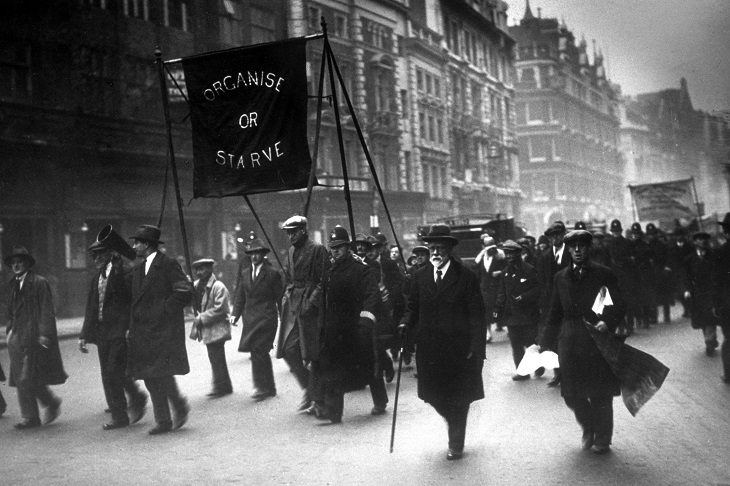
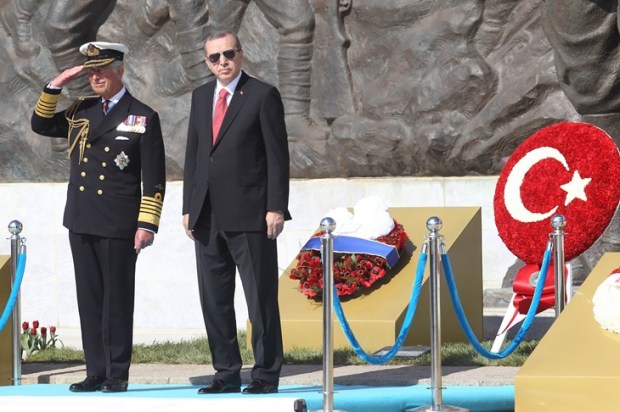
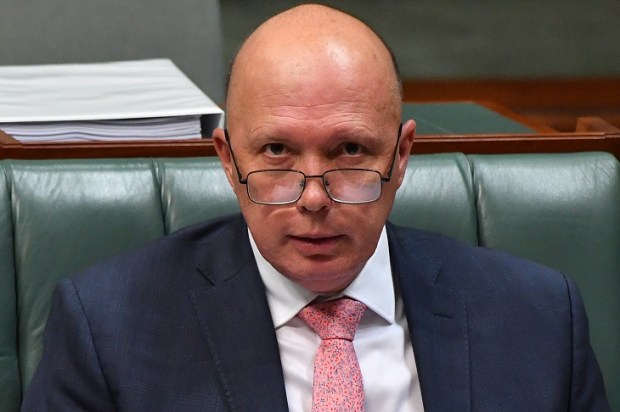

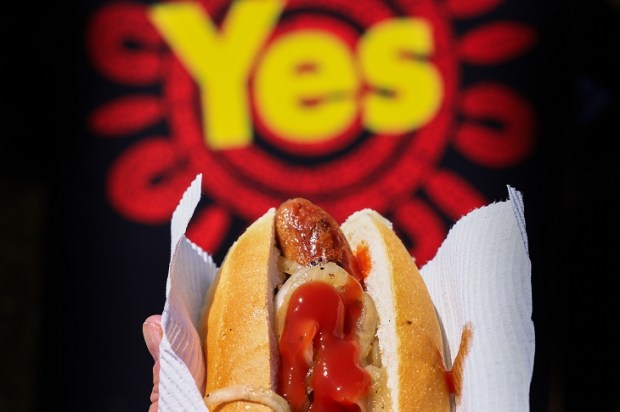
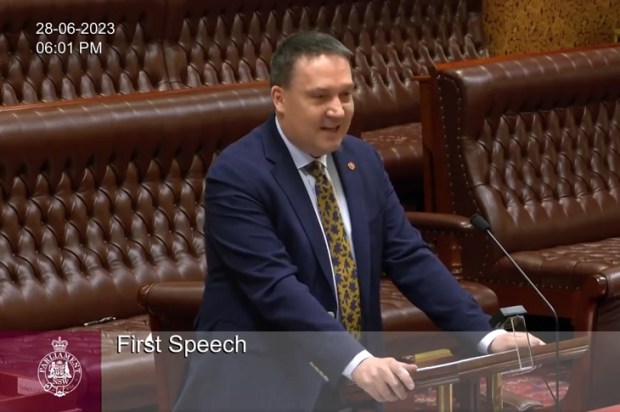


















Comments
Don't miss out
Join the conversation with other Spectator Australia readers. Subscribe to leave a comment.
SUBSCRIBEAlready a subscriber? Log in